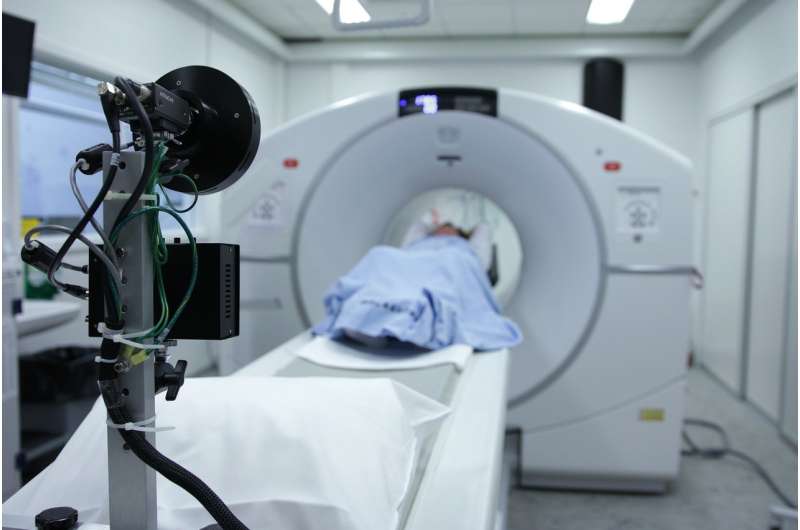Credit: CC0 Public Domain
According to ARRS' American Journal of Roentgenology (AJR), the resources required to warm iohexol 350 to body temperature before injection for CT may not be warranted, given the lack of observed practical benefit.
"The data suggest that maintaining iohexol 350 at room temperature is non-inferior to warming the agent to body temperature before injection," wrote first investigator Noor Basharat from the department of radiology at Valleywise Health in Phoenix, AZ.
Although extrinsically warming iodinated CT contrast media to body temperature can reduce viscosity and injection pressures, clinical data examining its effect on adverse events are both limited and conflicting. Basharat and team's retrospective study compared adult patients who received CT examinations using the low osmolality contrast media agent iohexol 350 (Omnipaque) that had either been warmed to body temperature or maintained at room temperature.
Among 3,939 patients (2,115 men, 1,824 women; median age, 48.0 years) who underwent CT using iohexol 350 prewarmed to body temperature, the adverse reaction rate was 0.28%—not significantly different (p=.69) from the reaction rate of 0.43% among 3,933 patients (1,992 men, 1,941 women; median age, 48.6 years) who received iohexol 350 maintained at room temperature. Furthermore, the risk difference in the body temperature group for adverse reactions relative to the room temperature group was below the non-inferiority margin of 0.6%.
Acknowledging that their results do not include the impact of extrinsic warming on other endpoints (i.e., image quality, patient comfort, etc.), "our findings question the utility of prewarming contrast media, which can be a resource-intensive process," the authors of this AJR article maintained.
More information: Noor F. Basharat et al, Effect of Extrinsic Warming of Low-Osmolality CT Contrast Media (Iohexol 350) on Extravasations and Patient Reaction Rates: A Retrospective Study, American Journal of Roentgenology (2021). DOI: 10.2214/AJR.21.26256
Journal information: American Journal of Roentgenology
Provided by American Roentgen Ray Society
























